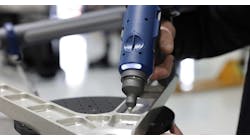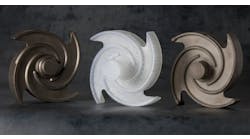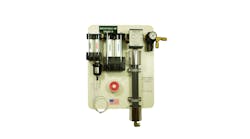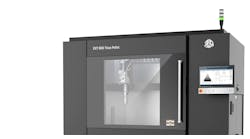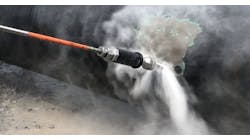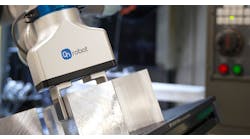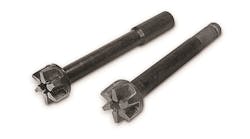Latest from New Products
MORGAN ADVANCED MATERIALS launched its new generation of degassing rotors for secondary aluminum processing applications, based on its extensive experience of materials science and metalcasting products. The first one-piece degassing rotor in silicon carbide for molten aluminum processing reportedly a cost-effective and high-performance alternative to the graphite material traditionally used for this task.
The presence of gas (typically hydrogen) and other particles within gravity or sand castings will result in bubbles that may severely compromise both appearance and performance (overall strength and density) of the finished products. This makes effective degassing essential to casting process quality.
Graphite has traditionally been the most widely used material for degassing rotors, but to address the high replacement costs and frequent changeovers associated with this material, Morgan resorted to its SiC crucible technology and materials expertise to develop a range of rotors that last up to five times as long before requiring replacement. It attributed the increased service life to the wear-resistant and anti-oxidation qualities of silicon carbide, and the high density of the isostatically pressed single piece design.
In addition, the rotor head has been optimized to reduce bubble size and deliver optimal gas dispersal through an innovative six-vane design.
Field tests at metalcasting facilities have shown significantly lower oxidation levels of the silicon-carbide degassing rotors at operating temperatures, compared with their graphite counterparts. It was noted that the degassing performance of the graphite rotors deteriorated as head geometry became distorted, while melt densities using the Morgan rotor were in fact notably higher over time than with graphite rotors.
The one-piece silicon carbide degassing rotor is available in a range of diameters with shaft lengths up to 1.2 m, depending on application requirements. Morgan also offers a selection of adapters to allow the rotors to operate with different degassing machines. The range is completed by a clay graphite anti-vortex plate that helps to prevent the reintroduction of hydrogen and aluminum oxide particles into the treated molten aluminum by reducing the circular metal flow caused by the rotation of the degassing rotor.
“Aluminium alloy cleanliness is one of the most important considerations for modern casters,” offered Mirco Pavoni of Morgan Advanced Materials explained. “The industry has seen a dramatic shift to tighter casting properties that can only be met through effective removal of hydrogen and other particles.
“Our one-piece silicon carbide degassing rotor adds significant value through its longevity and effective hydrogen removal. In tests, it achieved a usable life of more than 800 cycles in a heavy fluxing application - nearly three times the average of 300 cycles for comparable graphite products. Furthermore, several customers noted that the fluxes did not seem to attack the silicon carbide as they did the graphite. They also saw a measurable reduction in gas content and an increase in metal density using the silicon carbide rotor.”
Visit www.morganmms.com
